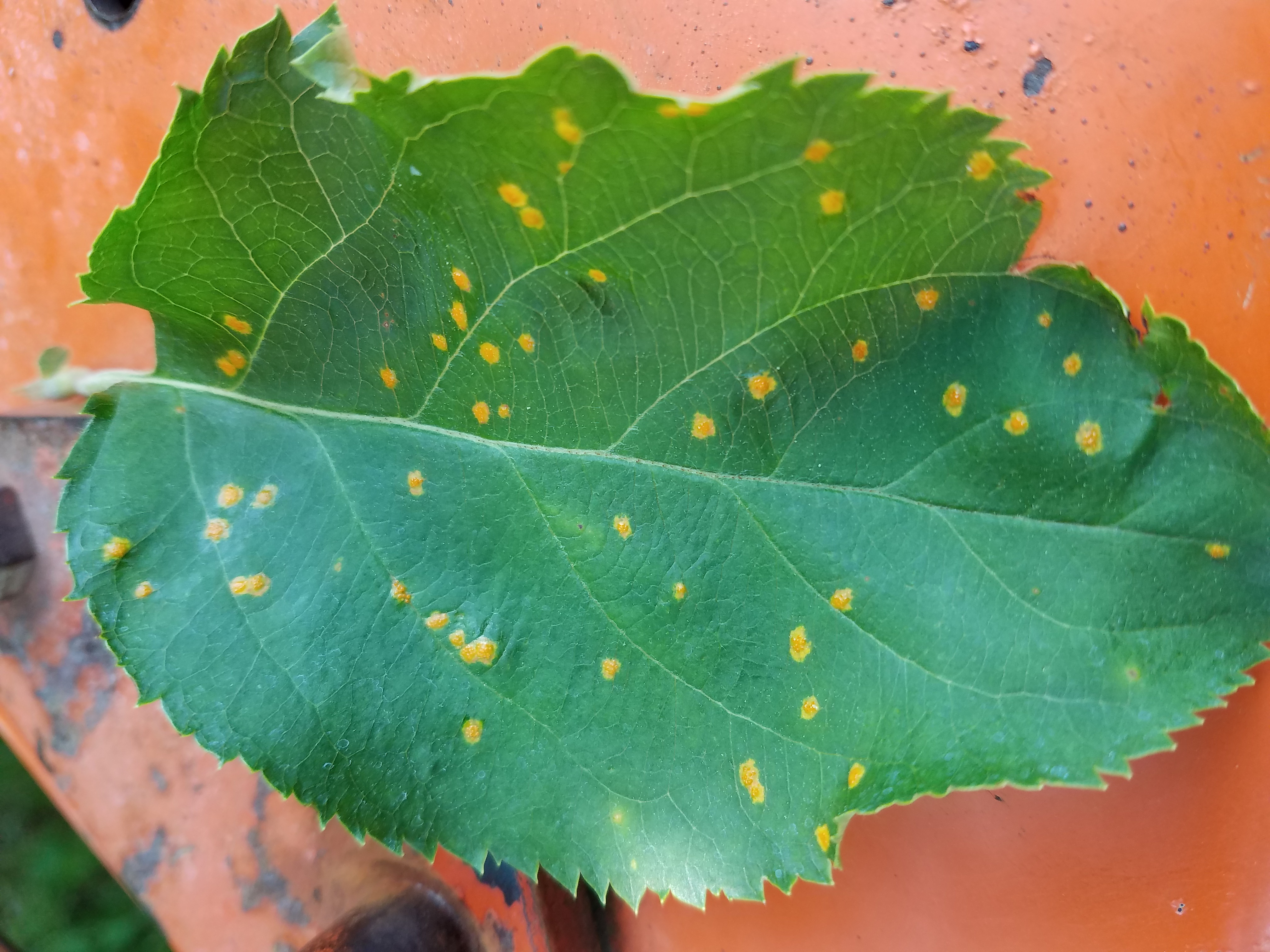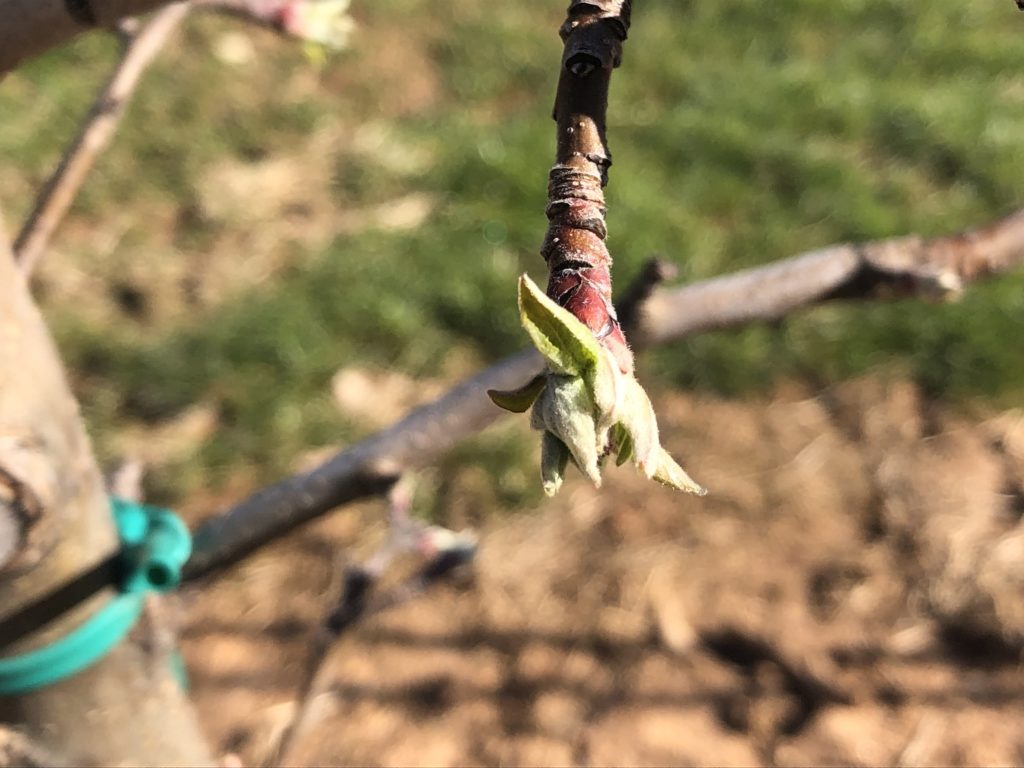Apple Disease Update: 1/2″ Green / Tight Cluster
go.ncsu.edu/readext?591131
en Español / em Português
El inglés es el idioma de control de esta página. En la medida en que haya algún conflicto entre la traducción al inglés y la traducción, el inglés prevalece.
Al hacer clic en el enlace de traducción se activa un servicio de traducción gratuito para convertir la página al español. Al igual que con cualquier traducción por Internet, la conversión no es sensible al contexto y puede que no traduzca el texto en su significado original. NC State Extension no garantiza la exactitud del texto traducido. Por favor, tenga en cuenta que algunas aplicaciones y/o servicios pueden no funcionar como se espera cuando se traducen.
Português
Inglês é o idioma de controle desta página. Na medida que haja algum conflito entre o texto original em Inglês e a tradução, o Inglês prevalece.
Ao clicar no link de tradução, um serviço gratuito de tradução será ativado para converter a página para o Português. Como em qualquer tradução pela internet, a conversão não é sensivel ao contexto e pode não ocorrer a tradução para o significado orginal. O serviço de Extensão da Carolina do Norte (NC State Extension) não garante a exatidão do texto traduzido. Por favor, observe que algumas funções ou serviços podem não funcionar como esperado após a tradução.
English
English is the controlling language of this page. To the extent there is any conflict between the English text and the translation, English controls.
Clicking on the translation link activates a free translation service to convert the page to Spanish. As with any Internet translation, the conversion is not context-sensitive and may not translate the text to its original meaning. NC State Extension does not guarantee the accuracy of the translated text. Please note that some applications and/or services may not function as expected when translated.
Collapse ▲With the exception of ‘Rome Beauty’, many apple cultivars at MHCREC are beyond green tip. If you have not yet applied a full rate of copper for protection against fire blight (and apple scab), my suggestion would be to skip it this year-particularly given the phytotoxicity/russet issues reported last year. At the tight cluster stage, apple scab, apple rusts, and powdery mildew should be the primary targets of your disease management programs.
Apple Scab Primary Infection: Ascospores are currently maturing inside of fungal structures called pseudothecia that are located on infected leaf litter from the previous season. During periods of rain, mature ascospores are released and can infect any unprotected green tissue. Up until the tight cluster stage, the rate of ascospores maturing is relatively slow, but begins to rapidly progress around late tight cluster/early pink bud. Last year I saw more scab in Western NC than in my previous two years in NC. As a result, if this is also a wet spring, there is potential for a heavy scab pressure throughout the region.
For an orchard in Hendersonville NC, I initiated the apple scab maturity model between 50-80% green tip on ‘Gala’ (March 2). As of March 19, ascospore maturity had reached 9% and two apple scab infection events had been predicted (one combined). No infection events are predicted in Western NC through March 24, however, keep your eye on the forecast for rain. To check out predicted infection events at a location closer to you follow this link:
Weather Stations in North Carolina

Ascospore maturity and apple scab infection events predicted in Hendersonville, NC through March 24, 2019.
Apple Rusts: In recent years, I’ve been receiving an increasing number of inquiries regarding apple rust diseases. Fungicide applications targeting cedar, quince, or hawthorn rusts should begin no earlier than tight cluster. Rusts are unique because they actually require two hosts to complete their life-cycle. Because of this requirement, the good news is that you don’t need to worry about a secondary cycle (as with scab and powdery mildew) and thus the window for fungicide applications is relatively short. If you have an alternate host (e.g. Eastern red cedar or susceptible junipers) for apple rusts within a couple of miles of your orchard, infection is likely to be more severe.
 Besides the fact that conditions were highly conducive for apple rust infections in 2018, I suspect that reports of apple rusts have been increasing due to a decline in FRAC 3 (DMI) fungicides from pink through 1st cover. Applications of multi-site protectants (e.g. captan and/or mancozeb), highly efficacious SDHI (FRAC 7) fungicides for scab management, and FRAC 11 (stroby) fungicides for early Glomerella leaf spot/bitter rot management are increasing during these important timings for rust control. If rusts have been in a problem previously, consider including a fungicide with a DMI active ingredient such as Rally 40WSP, Procure, Topguard, of Inspire Super. Many of these fungicides still have excellent activity against powdery mildew. Due to moderately wide-spread resistance to this class of fungicides make sure to tank mix with another product such as mancozeb.
Besides the fact that conditions were highly conducive for apple rust infections in 2018, I suspect that reports of apple rusts have been increasing due to a decline in FRAC 3 (DMI) fungicides from pink through 1st cover. Applications of multi-site protectants (e.g. captan and/or mancozeb), highly efficacious SDHI (FRAC 7) fungicides for scab management, and FRAC 11 (stroby) fungicides for early Glomerella leaf spot/bitter rot management are increasing during these important timings for rust control. If rusts have been in a problem previously, consider including a fungicide with a DMI active ingredient such as Rally 40WSP, Procure, Topguard, of Inspire Super. Many of these fungicides still have excellent activity against powdery mildew. Due to moderately wide-spread resistance to this class of fungicides make sure to tank mix with another product such as mancozeb.
Powdery Mildew: More on this next post, but just keep powdery mildew on your radar. Management of powdery mildew should begin around mid-late tight cluster/early pink. Symptoms of infected fruit include a netlike russetting, however, I haven’t seen many infections on fruit since I’ve been at NCSU. If it’s a warm, humid, but dry spring, powdery mildew infections are likely to be more frequent and severe. For those a little beyond the tight cluster stage, start scouting for primary powdery mildew infections which appear stunted, malformed and have a white-silver color.
1/2″ Green and Tight Cluster Fungicide Suggestions
This is not a complete list-Please check the 2019 Integrated Management Guide for Commercial Orchards in the Southeast for additional options.
Disclaimer: Those contributing to this newsletter have made every effort to provide accurate and up-to-date management recommendations. However, please keep in mind that pesticide regulations are constantly changing and thus recommendations set forth in this publication should not serve as a substitute for an actual pesticide label. In addition, factors such as host phenology, weather, cultivar, and tank mixtures might affect the efficacy and safety of an agrichemical product.





